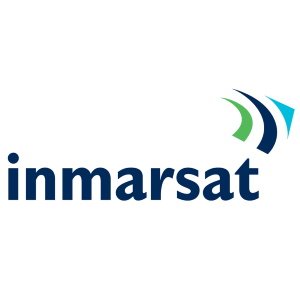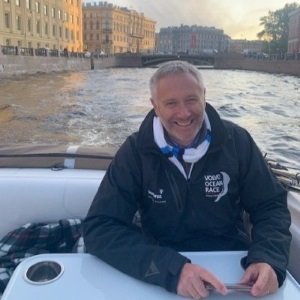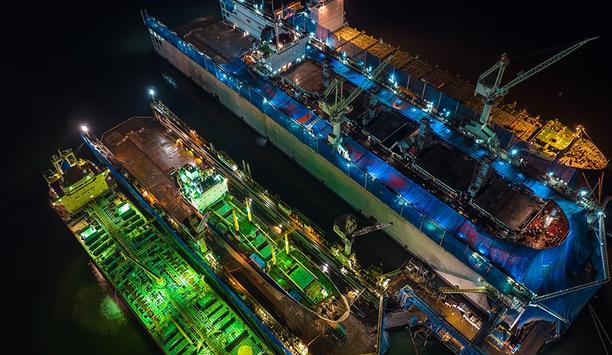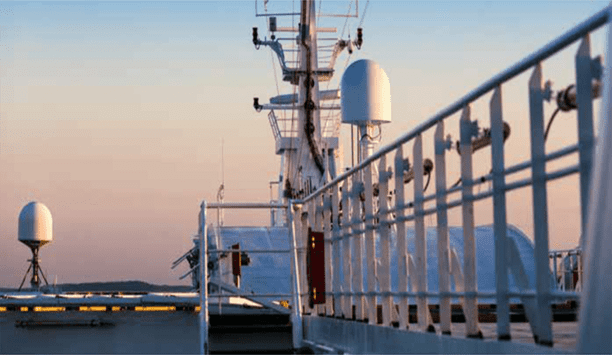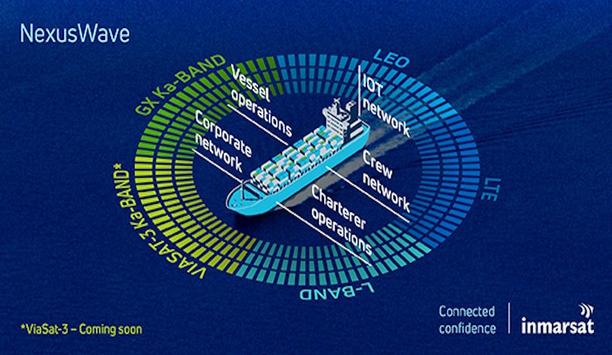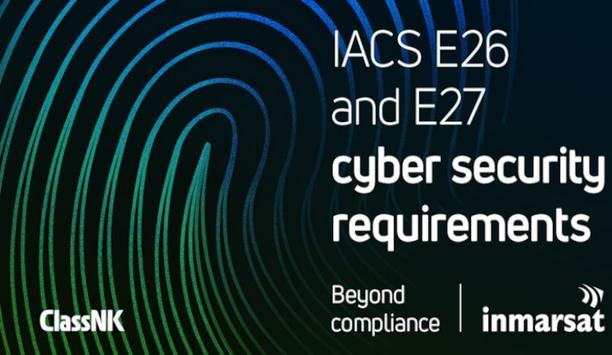Inmarsat Global Limited - Experts & Thought Leaders
Latest Inmarsat Global Limited news & announcements
Inmarsat Maritime, a Viasat company, has signed an agreement with Mitsui O.S.K. Lines, Ltd. (MOL) to upgrade its fleet from Fleet Xpress (FX) service to Inmarsat’s NexusWave. This fleet-wide transition to NexusWave will allow MOL to benefit from Inmarsat’s fully managed bonded connectivity service and accelerate the digitalisation strategy of the renowned Japanese shipping company. Local Inmarsat partner - JSAT MOBILE Communications will be responsible for implementing and supporting the upgrades on board, covering a fleet that includes liquefied natural gas (LNG) carriers, oil tankers, and car carriers. Evolving operational and crew connectivity needs Inmarsat NexusWave delivers the speeds, reliability, unlimited data, and global coverage to support this objective In response to evolving operational and crew connectivity needs, MOL is seeking multi-layered satellite communications services that support the transformation of its vessels into floating offices and homes. By combining multiple network underlays in one bonded connection, Inmarsat NexusWave delivers the speeds, reliability, unlimited data, and global coverage to support this objective, with enterprise-grade cyber-security, round-the-clock technical support, and fully transparent costs ensuring complete peace of mind. Digitalisation strategy Junichi Yoshiyama, Chief Digital & Information Officer, Mitsui O.S.K. Lines, Ltd., said: “Our digitalised and connected ships are becoming floating operations centres and homes for our crew, and Inmarsat’s NexusWave will help keep them connected to high-speed internet and support our onboard digitalisation strategy.” Words from Inmarsat President Ben Palmer, President, Inmarsat Maritime, said: “We are proud to continue our partnership with MOL and to deliver NexusWave as an accelerator of maritime digitalisation and, by extension, an enabler of the floating office and floating home.” He adds, “Forward-thinking operators like MOL are drawn to the solution for its performance, robust capabilities, and the confidence that comes from working with a reliable maritime connectivity partner.” Words from JSAT CEO Katsuaki Koike, CEO of JSAT MOBILE Communications, said: “MOL, JSAT, and Inmarsat have been long-term partners, and this collaboration further underscores our commitment to providing cutting-edge connectivity solutions.” Katsuaki Koike adds, “We are dedicated to supporting MOL’s digital transformation journey and look forward to ensuring seamless and reliable installations across MOL vessels.” NexusWave speed In recent real-world tests, NexusWave achieved download speeds of up to 330–340 Mbps, upload speeds of up to 70–80 Mbps, with average network availability exceeding 99.9%. As part of Inmarsat’s commitment to continuous improvement, the forthcoming integration of the next-generation ultra-high capacity, high-speed ViaSat-3 Ka-band network promises to increase NexusWave’s aggregated connectivity speeds even further.
Hyundai Global Services (HGS) announces the signing of a contract to deliver its Smart Ship and Satellite Communications package to KSS Line's shipping fleet, supported by Inmarsat’s Fleet Xpress and digital solution Fleet Connect. This is the first time that the Integrated Smart Ship (ISS) solution from the world’s largest shipbuilder, Hyundai Heavy Industries (HHI), will be delivered as a single package with a satellite communications service. The Smart Ship and Satellite Communications package is a combination of the ISS – an IoT platform for ships, developed by HHI Group to support vessel operation and device optimisation – supported by Inmarsat’s dedicated bandwidth service. MoU signed between HGS, Intellian and Inmarsat This achievement is a direct result of a collaboration between HGS, Intellian, and Inmarsat, the world pioneer in global, mobile satellite communications. Intellian and HGS signed a Memorandum of Understanding (MoU) in July 2019, and a similar arrangement between HGS and Inmarsat was signed in June 2019 at the Nor-Shipping exhibition in Oslo. The package will allow large volumes of measured data to be transmitted between ship and shore quickly and easily, facilitating remote operations and vessel management, monitoring, and analysis services through Fleet Connect's dedicated bandwidth. This is separate from the vessel’s Fleet Xpress connection that will be used for day-to-day business traffic and crew internet use. Integration of technology “Our plan is for our entire fleet to be operating using the Integrated Smart Ship and Satellite Communications solutions by 2021,” said a spokesman for KSS Line. “KSS Line is committed to continuous enhancement of its Information Communication Technology (ICT) environment to maximise fleet efficiency and reinvest the resulting savings into its business expansion.” Contract key points A total of 15 ships are covered by the contract, including five new vessels and 10 already in operation A total of 15 ships are covered by the contract, including five new vessels and 10 already in operation. The five new ships will be equipped with ISS from build, allowing their operators to manage assets more economically and efficiently. The 10 existing vessels will be provided with separate supporting web services to relay weather conditions and ship locations. The signing ceremony was attended by senior executives from both HGS and KSS. Words from HGS Director & Intellian CEO “This is a breakthrough for our Integrated Smart Ship and Satellite Communications solution and a milestone for maritime digitalisation, delivering always-on IoT in a single package with dedicated bandwidth that can be installed on existing ships or embedded at newbuild,” said Kyoungsoo Ahn, HGS Director. Intellian CEO Eric Sung said: “Smart shipping is an area of growth and importance for the maritime industry, with the opportunity for customers to gain efficiencies and cost savings on vessel operations. Through collaborating with our partners and delivering industry leading connectivity solutions, Intellian has a key role to play in helping customers achieve their objectives.” “Our partnership with HGS and Inmarsat will deliver great value to KSS Line and we are confident that more of the maritime industry will follow their lead, signing similar agreements in the future.” Words from Inmarsat President “We are delighted to be working with Hyundai Global Services and Intellian on this new Integrated Smart Ship solution with a line-fit satellite communications service at its heart, which means that an owner such as KSS can benefit from a service that is built-in by the shipyard and fully operational on delivery,” said Inmarsat Maritime President Ronald Spithout. “It is especially pleasing to see that our new digital solution, Fleet Connect will be a vital part of the service which highlights how Fleet Xpress is so much more than just a VSAT connectivity pipe.”
Inmarsat Maritime, a Viasat company, has signed an agreement with Sallaum Lines, a pioneering Roll-on/Roll-off (RoRo) cargo shipping company, to upgrade to Inmarsat Maritime’s NexusWave fully managed bonded connectivity service, making it an early adopter in region. As Sallaum Lines expands its global presence, NexusWave will provide secure, ultra-fast connectivity with unlimited data, complemented by Inmarsat’s Care Premium programme for 24/7 support and maintenance. IoT sensors and collaborative tools Reflecting a proactive digitalisation strategy, Sallaum Lines is adopting modern technologies, such as IoT sensors and collaborative tools to enhance decision-making and operational efficiency across its fleet. Inmarsat’s NexusWave will deliver the reliability, high speeds, and low latency that Sallaum increasingly relies on to facilitate data collection, analysis, and advanced monitoring across its 14-vessel RoRo fleet, including six newbuilds. NexusWave through network bonding Sallaum’s crew will have access to contact services and academic tools nearly anywhere in the world Sallaum Lines is committed to creating a healthy and happy working environment on board its vessels by ensuring crew members can stay connected with their families and friends during rest and off-duty hours. The company places high value on education and development and plans to deploy a fleetwide learning and skills development platform. Thanks to the unlimited, high-speed connectivity provided by NexusWave through network bonding, Sallaum’s crew will have access to communication services and educational tools virtually anywhere in the world – even in connectivity hotspots. Remote infrastructure and onboard portfolio Mr. Puneet Arora, Head of Technical, Sallaum Lines, commented: "NexusWave will provide us with fast and reliable connectivity without the worry of outages, latency, or interruptions." He adds, "This new partnership will also enable us to enhance our remote infrastructure and expand our onboard portfolio with solutions that meet both operational needs and crew welfare requirements. We are proud to be an early adopter of NexusWave." Inmarsat Maritime’s capabilities Dennis Winterswijk, Regional Director, EMEA, Inmarsat Maritime, said: "Deep understanding of Inmarsat Maritime’s capabilities, and trust in our reliability, were key factors in Sallaum Lines’ decision to select NexusWave." He adds, "Its decision to adopt NexusWave highlights the company’s commitment to enhancing operational efficiency and reliability, as well as its position as a forward-thinking, technology-driven company."
Insights & Opinions from thought leaders at Inmarsat Global Limited
Aiming to establish minimum requirements for the cyber-resilience of newbuild vessels and their connected systems, IACS unified requirements (URs) E26 and E27 provide a new benchmark for shipping’s response to its growing exposure to cyber-attacks. Officially in force from 1 July 2024 and broadly welcomed by industry, the new URs represent another step forward in strengthening Maritime's resilience to the evolving cyber threat. However, according to a thought-provoking discussion recently hosted by Edwin Lampert, Executive Editor of Riviera in partnership with Inmarsat Maritime (a Viasat company), shipping companies must still conduct comprehensive risk assessments and implement appropriate mitigation measures. Vessel’s cyber security They ensure all stakeholders are responsible for the vessel’s cyber security Kostas Grivas, Information Security Officer, Angelicoussis Group told the ‘IACS URs E26 & E27: Bridging the gap between regulation and implementation’ session that the URs bring “obvious benefits” such as eliminating “scattered requirements”. They provide “common and crystal-clear ground for auditing and control purposes”, and establish “a solid description of the minimum technical, procedural, and other criteria that govern a vessel’s cyber resilience,” he said. Finally, they ensure “all stakeholders are responsible for the vessel’s cyber security”. Makiko Tani, Deputy Manager, Cyber Security at classification society ClassNK, also acknowledged that the new requirements will “contribute to the visibility of ever-digitalising shipboard networks and their assets”, however, as there is no one-size-fits all cybersecurity solution to all, she continued, “additional controls beyond those specified in the requirements may be necessary, depending on the vessel’s connectivity”. Digital transformation strategy To properly address the cyber risks that a specific vessel is exposed to, she said, “shipowners must conduct a thorough cyber-risk assessment. This relies on a ‘C-level commitment’ to establishing a cyber-security programme that facilitates compliance with URs E26 and E27 and any other future industry requirements while supporting the organisation’s digital transformation strategy”. The importance of looking beyond the IACS URs was also emphasised by Laurie Eve, Chief of Staff, Inmarsat Maritime, who proposed three key areas where companies should “focus and invest not only to meet new requirements but also to go beyond compliance and build good cyber resilience”. Quality management system and standards The firm should focus on training and grasping, managing user rights, investing in a regime system “The first key area, ‘people and culture’, addresses the notion that people are the weakest link in cyber security. According to a 2023 report from the United States Coast Guard as well as findings from Inmarsat’s security operations centres, phishing is the most common initial access vector in cyber-attacks. Investing in people, therefore, should be an absolute no brainer”, commented Eve. Specifically, he continued, a company should focus on training and awareness, managing user privileges, investing in a quality management system and standards such as ISO 27001, assessing suppliers’ risk-management practices, and embedding cyber-security in the organisation’s continuous improvement culture. Risk-management approach The third and final key area according to Eve is an ‘incident response plan’ (IRP). The second key area is ‘network-connected systems and services’. Given the number of attack surfaces on board a vessel and the ever-growing volumes of data moving between systems, many companies lack the time and resources to address all possible weaknesses. The solution, Eve said, is a risk-management approach in which the organisation assesses the risks, sets its risk appetite, and implements security measures according to the costs it is willing and able to bear. The third and final key area according to Eve is an ‘incident response plan’ (IRP). It’s prudent to assume that at some point there will be failures and a breach, an IRP comprises a robust set of contingencies to keep the cost of business disruption to a minimum. It requires investment in backup and data systems as well as regular staff training. “Having a plan is good; training, rehearsing, and improving the plan is better,” explained Eve. Cyber-security requirements While these recommendations apply to all ship owners, Eve acknowledged that there are differences from small to large operators in terms of the budget and internal capability invested in cyber resilience. “Inmarsat’s Fleet Secure offers a ‘one-stop shop’ for cyber-security requirements which makes it a particularly good fit for “smaller operators without the in-house capability to put together their own solutions”, he said. Inmarsat’s Fleet Secure offers a ‘one-stop shop’ for cyber-security requirements Combining three powerful components – Fleet Secure Endpoint, Fleet Secure Unified Threat Management, and Fleet Secure Cyber Awareness Training – the Fleet Secure portfolio provides the tools and facilitates a risk-management approach, supporting “compliance with the new requirements” and, more broadly, “increasing cyber resilience”, Eve added.











